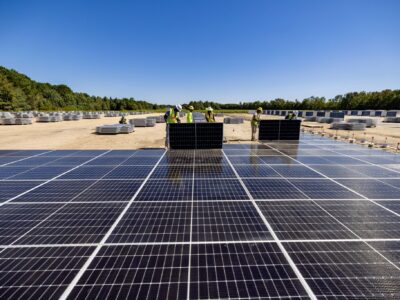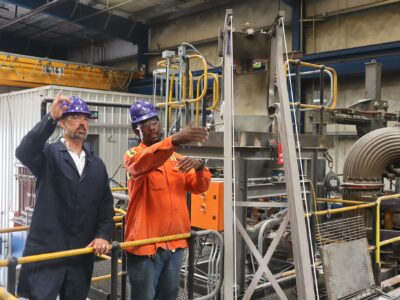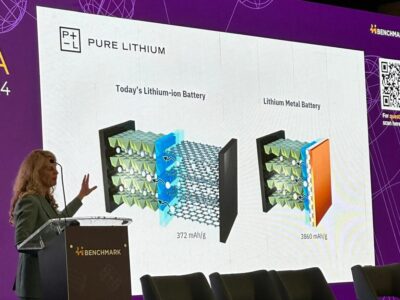In late May, the U.S. House narrowly pushed through its budget reconciliation bill, where, unfortunately, it took a sledgehammer to clean energy tax credits. “Repealing these tax credits is a direct threat to Iowa’s economy, workforce, and energy security,” Todd Miller, president and co-founder of 1 Source Solar and board president of the Iowa Solar Energy Trade Association, and Amber Markham, director of external affairs at The Nature Conservancy, wrote in an op-ed published in the Des Moines Register. Although they wrote the piece before the House released its bill, their message is even more critical as the U.S. Senate enters the process for making changes to the bill.
The authors wrote, “Here in Iowa, those very same clean energy tax credits are already delivering results. They’re helping small businesses in Fairfield cut costs, giving farmers near Ames tools to improve their bottom line, and training electricians in Sioux City for high-skilled, good-paying jobs. They’re putting solar panels on barns, boosting local economies, and keeping family energy bills manageable — all while building a more stable power grid.”
Markham and Miller pointed to The Nature Conservancy and BW Research’s research on the impact of the tax credits on Iowa between 2025 and 2032. According to their findings, the tax credits will bring in almost $30.2 million in local, state, and federal tax revenue every year and add $238.4 million to the state’s economy on an annual basis. They will also support over 2,300 jobs annually, generating more than $116 million in annual household income. “Clean energy is now one of the fastest-growing job sectors in the country, and it’s helping keep young people in Iowa by offering skilled, meaningful work in their own communities. These investments are not red or blue. They’re just smart policy,” they wrote.
“And these jobs aren’t just short-term. They include long-term careers in manufacturing, engineering, transportation, and energy operations for Iowans,” the authors explained. The manufacturing and supply chain sectors will generate 29% of the total jobs. The transportation tax credits will require a supply chain workforce, accounting for over half of the jobs they support.

Photo Courtesy 1 Source Solar
The authors noted that Iowa is a wind energy leader, producing more electricity from wind than from any other source, which last year resulted in the highest state percentage at 64.7%. The state also continues to build other clean energy generation sources: “We adapt to emerging technologies that uplift working families. And when we see something that’s improving the lives of our neighbors, families, and friends, we don’t tear it down — we build on it.”
Markham and Miller also highlighted the promising potential of clean power: “When you combine clean energy with traditional power sources, you get lower costs, fewer price spikes, and more energy resilience in times of extreme weather that strain our power grid.” Therefore, the tax credits that support renewables are essential for keeping Iowans’ energy bills lower and their lights on. They explained, “The clean energy tax credits help to make this resilience and economic prosperity happen; it’s about having a diverse energy mix that works better for everyone while boosting local economies.”
However, all the benefits for Iowan workers, households, and businesses are now at risk with the threat of stripping away the tax credits. The authors reflected, “A repeal of the clean energy tax credits would undo our progress. It would mean higher costs for families and businesses — projecting a 7% to 10% increase in energy bills by 2026, according to national projections. It would slow job growth, shrink opportunity, and make us more reliant on the same fossil fuel volatility that’s cost Iowa consumers and businesses dearly in the past.”
Markham and Miller concluded, “Congress has the power to either preserve the momentum we’ve created and safeguard clean energy tax credits that enable Iowa to prosper or send our state back to a time with more expensive energy and fewer job opportunities for young Iowans, and shrink a burgeoning high-skilled industry.”





